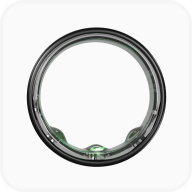
Types and stages of hypertension
In the rhythm of life's daily hustle, the silent intruder known as the different types of hypertension often goes unnoticed until it makes its presence felt in the form of severe health complications. In this blog, we unravel the types of hypertension and understand the various stages of hypertension that collectively shape the landscape of this health concern.
From the subtle nuances of primary and secondary hypertension to the critical stages that demand immediate attention, we embark on a journey to demystify this silent concern. Join us as we delve into the classification of hypertension, shedding light on the crucial aspects that empower individuals to take control of their well-being.
What is hypertension?
Hypertension, commonly known as high blood pressure, is a medical condition characterised by elevated pressure exerted by the blood against the walls of arteries. This persistent force, measured in millimetres of mercury (mmHg), can lead to various health complications if not properly managed.
Essential to circulate blood throughout the body, blood pressure becomes problematic when consistently elevated, increasing the risk of conditions such as heart disease, stroke, and kidney damage. Understanding and controlling the types of hypertension is crucial for maintaining overall health and preventing long-term complications.

Types of hypertension
Hypertension manifests in various forms, each with distinct characteristics. Understanding the types of hypertension is essential for tailored treatment and effective management. Let’s take a deeper look into this health concern and classify hypertension to better understand it.
1. Primary (essential) hypertension
- Develops gradually over time.
- No identifiable underlying cause.
- Influenced by lifestyle, genetics, and environmental factors.
2. Secondary hypertension
- Arises from an identifiable underlying health condition.
- Treating the root cause is crucial for managing this type effectively.
3. Isolated systolic hypertension (ISH)
- Primarily affects older adults.
- Characterised by elevated systolic blood pressure while diastolic pressure remains within the normal range.
4. White-coat hypertension
- Blood pressure elevates in medical settings due to stress.
- Requires careful monitoring to avoid misdiagnosis and unnecessary treatment.
5. Masked hypertension
- Normal blood pressure readings in clinical settings.
- Elevated readings in everyday life.
- Identification is vital for accurate diagnosis and timely intervention.
What are the stages of hypertension
We can classify hypertension into different stages based on blood pressure readings. Understanding the stages of hypertension helps gauge the severity of the condition and guides appropriate interventions:
1. Normal blood pressure
- Systolic: Less than 120 mmHg
- Diastolic: Less than 80 mmHg
- Blood pressure is within the optimal range, reflecting a healthy cardiovascular system.
2. Elevated blood pressure
- Systolic: 120-129 mmHg
- Diastolic: Less than 80 mmHg
- Blood pressure is elevated but is not classified as hypertension yet. Lifestyle modifications are often recommended at this stage.

3. Stage 1 hypertension
- Systolic: 130-139 mmHg
- Diastolic: 80-89 mmHg
- This stage signifies the onset of hypertension, requiring lifestyle changes and, in some cases, medication for effective management.
4. Stage 2 hypertension
- Systolic: 140 mmHg or higher
- Diastolic: 90 mmHg or higher
- Blood pressure has escalated to a higher level, demanding intensified interventions. A combination of lifestyle modifications and medications is often necessary.
5. Hypertensive crisis
- Systolic: 180 mmHg or higher
- Diastolic: 120 mmHg or higher
- This critical stage requires immediate medical attention. A hypertensive crisis can lead to severe organ damage and warrants emergency measures to stabilise blood pressure.
Regular monitoring of blood pressure is crucial to detecting changes and addressing them promptly. It's important for individuals to work closely with healthcare professionals to manage the stages of hypertension effectively and reduce the risk of complications.
Risk factors you must know in hypertension
Identifying and understanding the risk factors associated with the different types of hypertension is crucial for prevention and early intervention. Here are key factors that can contribute to the development of high blood pressure:
1. Age:
Hypertension becomes more common as individuals age. The risk increases drastically after the age of 65.
2. Family history:
A family history of hypertension can lead to an increased risk. Genetic factors play a role in predisposing some people to high blood pressure.
3. Race and ethnicity:
Certain ethnic groups, including African Americans, are at a higher risk of developing hypertension types. It may also occur at an earlier age in these populations.
4. Gender:
Men are often at a higher risk of developing hypertension compared to women, especially until the age of 64. After age 65, the risk becomes similar for both genders.
5. Lifestyle factors:
Poor dietary habits, high sodium intake, excessive alcohol consumption, and lack of physical activity contribute significantly to hypertension risk.

6. Obesity:
Being overweight or obese increases the strain on the heart, leading to higher blood pressure. Weight management is crucial in hypertension prevention.
7. Tobacco use:
Smoking or using tobacco products can raise blood pressure and damage blood vessels. Quitting smoking is crucial for overall cardiovascular health.
8. High sodium intake:
Consuming too much sodium can contribute to elevated blood pressure. A diet rich in processed foods and high-sodium snacks increases the risk.
9. Chronic stress:
Persistent stress can contribute to hypertension. Implementing stress-reduction techniques and maintaining a healthy work-life balance are essential.
10. Sleep apnoea:
Sleep apnoea is a condition characterised by interrupted breathing during sleep. When untreated, it is associated with an increased risk of hypertension.
Symptoms and complications
Hypertension is often referred to as the "silent killer" because it may not present noticeable symptoms until it reaches advanced stages. However, understanding the ways in which the types of hypertension manifest can help you identify the stages of hypertension as well.
Here's an overview of potential symptoms and complications associated with different types of hypertension:
Symptoms:
1. Headaches:
Persistent headaches, especially in the back of the head, can be a symptom. However, not everyone who has hypertension experiences headaches.
2. Dizziness or lightheadedness:
Feeling dizzy or lightheaded, particularly when standing up, may occur in some individuals with high blood pressure.

3. Blurred or double vision:
Changes in vision, such as blurred or double vision, can be associated with hypertension-related eye problems.
4. Nosebleeds:
While not a common symptom, some individuals with hypertension may experience occasional nosebleeds.
It's important to note that these symptoms are not exclusive to the types of hypertension and can be caused by various other factors. Regular blood pressure monitoring and health check-ups are essential for early detection.
Complications:
1. Heart disease:
Hypertension increases the workload on the heart, leading to conditions like coronary artery disease, heart attack, and heart failure.
2. Stroke:
Prolonged high blood pressure can damage blood vessels in the brain, increasing the risk of stroke.
3. Kidney damage:
Hypertension can impair the kidneys' ability to filter blood, leading to kidney disease or failure.
4. Vision issues:
Damage to the blood vessels in the eyes can result in vision problems and, in severe cases, blindness.
5. Peripheral artery disease (PAD):
Reduced blood flow to the limbs due to damaged arteries can result in PAD, causing pain and difficulty walking.

6. Aneurysms:
Weakened blood vessel walls, often caused by hypertension, can lead to the development of aneurysms, posing a risk of rupture.
7. Cognitive decline:
Hypertension is associated with an increased risk of cognitive decline and may contribute to conditions like dementia.
8. Metabolic syndrome:
Hypertension is often part of a cluster of conditions, including high cholesterol, obesity, and insulin resistance, known as metabolic syndrome.
Learn its diagnosis and monitoring
In order to be able to classify hypertension, learning how to diagnose it is crucial. Routine check-ups are key for timely detection and monitoring, ensuring proactive health management.
1. Blood pressure measurement:
Diagnosis begins with regular blood pressure measurements. The ideal blood pressure reading is typically around 120/80 mmHg.
2. Ambulatory blood pressure monitoring (ABPM):
In some cases, doctors may recommend ABPM, a device worn for 24 hours, providing a comprehensive view of blood pressure variations throughout the day.
3. Home blood pressure monitoring:
Regular monitoring at home using a reliable blood pressure monitor is essential for individuals with hypertension. It helps track changes and ensures timely interventions.
4. Routine check-ups:
Regular medical check-ups are crucial for assessing overall health and detecting early signs of complications associated with hypertension.

Treatment and how to get rid of it
Now that we know the different types of hypertension, let’s look at how to treat it. Managing hypertension required sustained efforts in adherence to prescribed plans.
1. Lifestyle modifications:
- Adopting a diet rich in vegetables, fruits, and low-fat dairy.
- Maintaining a healthy weight through regular activity and controlling meals.
- Avoiding processed foods and limiting sodium intake.
- Limiting alcohol and tobacco consumption.

2. Combination therapy:
- For some people, a combination of medications may be prescribed to reach optimal blood pressure control.
3. Regular monitoring and adherence:
- Consistent monitoring of blood pressure at home.
- Consistently following prescribed medications and regularly following up with healthcare professionals.
Need to follow some lifestyle changes
Embracing lifestyle changes is pivotal in hypertension management. Here are some tips for sustained well-being and blood pressure control.
1. Dietary changes:
- Reducing saturated fats, cholesterol, and processed foods.
2. Regular exercise:
- Engaging in regular physical exercises for at least 150 minutes per week.

3. Stress management:
- Implementing techniques to reduce stress like meditation or yoga.
4. Quitting smoking:
- Smoking cessation is vital for overall cardiovascular health.
5. Limiting alcohol intake:
- Moderating alcohol consumption to recommended levels.
What are medications for hypertension
It's crucial to note that the types of hypertension are chronic conditions, and management often involves a combination of lifestyle modifications and, in some cases, medication. Regular communication with healthcare professionals is essential for personalised and effective treatment plans.
1. Diuretics:
Examples include hydrochlorothiazide (HCTZ), chlorthalidone, and indapamide.
2. ACE inhibitors:
Examples include enalapril, lisinopril, and ramipril.
3. ARBs (Angiotensin II Receptor Blockers):
Examples include losartan, valsartan, and irbesartan.
4. Calcium channel blockers:
Examples include amlodipine, nifedipine, and diltiazem.
5. Beta-blockers:
Examples include metoprolol, atenolol, and carvedilol.

Conclusion
In summary, the types of hypertension can be a huge health concern if not treated carefully. Recognising the subtle symptoms and understanding risk factors become crucial for early detection and intervention.
The journey to classify hypertension and manage it involves lifestyle adjustments and regular monitoring. Ultimately, knowledge and proactive choices empower individuals to defy the silent threat, fostering a path towards lasting cardiovascular health.









